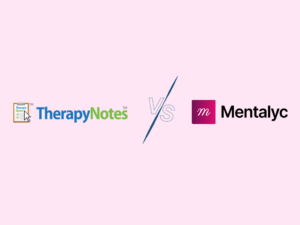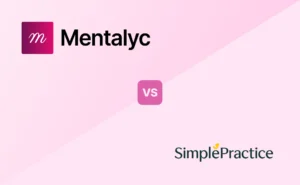Attention all mental health professionals! Are you tired of flipping through countless pages and scrolling endlessly through online databases to find the perfect ICD-10 code for your mental health diagnosis? Well, look no further! This comprehensive guide has everything you need to revolutionize how you navigate the world of mental health coding. Whether you're a seasoned professional or just starting in the field, this quick reference guide is guaranteed to save you time and frustration and provide an indispensable resource at your fingertips. Get ready to unlock the secrets of accurate coding with our comprehensive guide, and take your practice to the next level with our ultimate cheat sheet!
Understanding the Importance of ICD-10 Codes in Mental Health Practice
ICD-10 codes are alphanumeric codes used by healthcare professionals to classify medical diagnoses. These codes provide a universal language for consistent documentation and communication in the healthcare industry. For mental health professionals, ICD-10 codes offer a standardized way to identify various mental health disorders, allowing for accurate diagnosis and appropriate treatment planning. Each code represents a specific disorder or condition and includes detailed information about symptoms, severity levels, and other relevant factors.
Using ICD-10 codes streamlines data collection for research purposes and creates consistency in reporting mental health statistics globally. Additionally, they facilitate processing insurance claims by providing clear diagnosis documentation on billing forms, which is required to determine coverage eligibility and payment amounts. Understanding and utilizing ICD-10 codes is essential for mental health professionals to communicate effectively with other healthcare stakeholders while providing quality patient care. By using ICD-10 codes correctly and consistently, healthcare professionals contribute to individual patient care and advancing knowledge in the mental health field.
Exploring the Framework of ICD-10 Codes
Mental health professionals use Chapter V of ICD-10 codes for diagnosing mental and behavioral disorders. These codes consist of three to seven characters, each representing a specific category of information. Some codes may only have three or four characters if they do not need further specification.

New! Transfer your notes to EHR with a single click. No more copy-pasting.
The first character in an ICD-10 code indicates the chapter or broad category under which the diagnosis falls.
The second and third characters further narrow down the diagnosis within the specific chapter. For example, all codes starting with F represent mental and behavioral disorders due to psychoactive substance use.
The fourth character provides more detailed information about the diagnosis, such as severity or anatomical location.
The fifth character is used to specify if there are any complications related to the diagnosis or if it is a recurrent episode.
The sixth character is reserved for particular purposes, such as indicating whether a patient has recovered from a specific disorder or is receiving ongoing treatment.
The seventh character means whether the diagnosis is provisional or confirmed.
Deciphering the ICD-10 Code Structure
As a mental health professional, familiarizing yourself with the most frequently used ICD-10 codes means less searching and more time focusing on your clients. Feel free to print this reference sheet at your desk for easy access!
Here are some of the commonly used ICD-10 codes in mental health treatment:
Depressive Disorders
F32.0 Major depressive disorder, single episode, mild
F32.1 Major depressive disorder, single episode, moderate
F32.2 Major depressive disorder, single episode, severe without psychotic features
Anxiety Disorders
F40.00 Agoraphobia, unspecified
F40.10 Social phobia, unspecified
Post-Traumatic Stress Disorder
F43.10 Post-traumatic stress disorder, unspecified
Obsessive-Compulsive Disorder
F42 Obsessive-compulsive disorder
Feeding and Eating Disorders
F50.2 Bulimia nervosa
F50.8 Other eating disorders
Sleep-Wake Disorders
F51.01 Insomnia due to a mental disorder
Mastering the Art of Assigning Accurate ICD-10 Codes
To select the most accurate ICD-10 codes for your clients, keep the following tips in mind:
Utilize Online Tools for Code Lookup
The best way to search for ICD-10 codes is through online tools like those provided by the Centers for Medicare & Medicaid Services (CMS) or medical coding software companies like Find-A-Code or AAPC Coder. These tools allow you to search for keywords related to a diagnosis or procedure and provide a list of relevant ICD-10 codes.
Review Code Changes Regularly
Ensure you have the latest version of the ICD-10 manual and coding guidelines to code claims accurately. Outdated codes can lead to denied or delayed reimbursement.
Follow Proper Code Sequencing
When assigning ICD-10 codes, following the proper sequencing guidelines is essential. The first-listed diagnosis should be the primary reason for the patient's visit, while any additional diagnoses should be listed in order of significance.
Note Code Categories
ICD-10 mental and behavioral health codes are organized into categories based on disorder type. Know which category your client's diagnosis falls under, such as neurotic, stress-related, somatoform, or mood disorders. Then, look for the specific code within that category.
Check the Code Descriptions
Read the code descriptions to find the one most closely matches your client's symptoms and diagnosis. The descriptions offer details about the specific disorders and conditions the codes represent. Some codes may seem similar, so paying close attention to the descriptions will ensure you choose the right one.
Consult with Other Healthcare Professionals
Consulting a colleague experienced with ICD-10 coding can be helpful if you have questions about selecting a particular code. They may have insight into the nuances between similar codes or be able to point you to valuable resources. However, you are ultimately responsible for assigning the correct codes to your clients.
Use an ICD-10 Manual
ICD-10 coding manuals provide an overview of how the coding system is organized and the complete list of codes and descriptions. Manuals can be purchased as reference books or accessed online. They are a helpful resource, especially when using ICD-10 codes.
Expert Tips for Memorizing and Organizing ICD-10 Codes
Memorizing and organizing ICD-10 codes can be overwhelming for mental health professionals, as there are over 68,000 codes to remember. Mental health professionals must invest time and effort in familiarizing themselves with their field's most commonly used codes. However, mental health professionals can make this process easier and more efficient with the right strategies.
Create mnemonic devices or memory aids that associate specific codes with memorable words or phrases. For example, if you frequently use the code F32.9 for major depressive disorder, you could create a mnemonic device like "Frowning three times a day."
Group-related codes based on similarities. You can create categories within your coding system that reflect different diagnoses or treatment modalities. Organizing codes in this way makes it easier to locate specific ones when needed.
Use resources such as electronic health record (EHR) systems or coding software to simplify the process of memorization and organization. These tools often have built-in features that allow you to search for specific codes quickly and efficiently.
Set aside time each week to review and quiz yourself on different codes. Flashcards can also be an effective tool for memorization – write down the code on one side and its associated diagnosis or treatment on the other.
Conclusion
In today's fast-paced world of mental health treatment, the importance of ICD-10 codes cannot be overstated. These codes serve as a standardized system for classifying diagnoses and procedures, making communicating with insurance providers and tracking outcomes easier. Take inspiration from the cheat sheet tips in this article to create a reference guide that will work best for you and ensure consistency in your work. While the complexities of ICD-10 coding may seem daunting initially, don't be discouraged. With practice and perseverance, you can master ICD-10 coding with ease and empower yourself with knowledge.
To stay on top of the latest in mental health, rely on Mentalyc. Our newsletter provides insights from mental health practitioners, keeping you updated on new research, diagnostic criteria, and treatment approaches relevant to your practice. And with our AI progress note generator, you can save valuable time and increase efficiency. Our tool generates drafts of progress notes based on client sessions, giving you a head start on documentation and freeing up more time for client care—trust Mentalyc to help you become a successful mental health professional in today's healthcare landscape, and sign up for your free trial today!
FAQ
ICD-10 codes are a standardized system of alphanumeric codes used to classify and code various mental health conditions. They provide a universal language for healthcare professionals to communicate diagnoses and streamline billing processes.
Why are ICD-10 codes necessary in the field of mental health?
ICD-10 codes are essential in mental health as they contribute to accurate documentation and communication of diagnoses. They facilitate treatment planning, reimbursement, and data analysis for research and treatment outcome evaluation.
What are the benefits of using ICD-10 codes for mental health professionals?
Utilizing ICD-10 codes can bring several advantages to mental health professionals. These codes can enhance patient care coordination, improve billing accuracy, and assist in capturing crucial data for research and treatment evaluation purposes.
How do I understand the structure of ICD-10 codes?
Understanding the structure of ICD-10 codes involves familiarizing yourself with their different components and categories. These codes consist of alphanumeric characters and contain segments that convey specific information about the diagnosis, including the condition, severity, and other relevant details.
Which ICD-10 codes are commonly used for mental health disorders?
Mental health professionals commonly use ICD-10 codes for a wide range of mental health disorders. These codes cover conditions such as anxiety, depression, substance abuse, and personality disorders. They provide a standardized way to classify and code these conditions in clinical practice.
How can I accurately assign ICD-10 codes during mental health diagnosis?
Accurately assigning ICD-10 codes during mental health diagnosis requires a thorough understanding of the diagnostic process. Mental health professionals should document and communicate diagnoses according to the specific criteria outlined in the ICD-10 code system. Proper coding is crucial for treatment planning and accurate reimbursement.
Are there any updates or changes in ICD-10 codes for mental health?
The realm of ICD-10 codes is continually evolving, and there may be updates or changes specific to mental health diagnoses. Mental health professionals must stay informed about modifications or additions to ensure accurate coding and documentation.
What resources can I use to find ICD-10 codes for mental health?
Various reliable resources and tools are available for mental health professionals to find accurate and up-to-date ICD-10 codes. Online databases and specialized software can help locate the necessary codes for your practice, ensuring efficient and proper coding.
Resources:
Amerigroup. (n.d.). Mental, Behavioral and Neurodevelopmental Disorders (F01-F99) ICD-10-CM. Google. https://provider.amerigroup.com/dam/publicdocuments/ALL_CARE_CB_MentalDisorders_mrdcoding_tips.pdf
Common ICD-10 Codes for Mental & Behavioral Health. (n.d.). ICD-10 Codes: Lookup & Conversion. https://icdcodelookup.com/icd-10/common-codes/mental-behavioral-health
Edwards, B. (2014, March 5). Three Steps to Selecting ICD-10 Codes Accurately. Physicians Practice. https://www.physicianspractice.com/view/three-steps-selecting-icd-10-codes-accurately
Understanding ICD-10. (2020, December 16). American Physical Therapy Association. https://www.apta.org/your-practice/payment/coding-billing/icd-10/faqs
Why other mental health professionals love Mentalyc

“Having Mentalyc take away some of the work from me has allowed me to be more present when I’m in session with clients … it took a lot of pressure off.”
LPC

“A lot of my clients love the functionality where I can send them a summary of what we addressed during the session, and they find it very helpful and enlightening.”
Therapist

“It’s so quick and easy to do notes now … I used to stay late two hours to finish my notes. Now it’s a breeze.”
Licensed Professional Counselor

“It takes me less than 5 minutes to complete notes … it’s a huge time saver, a huge stress reliever.”
Licensed Marriage and Family Therapist






